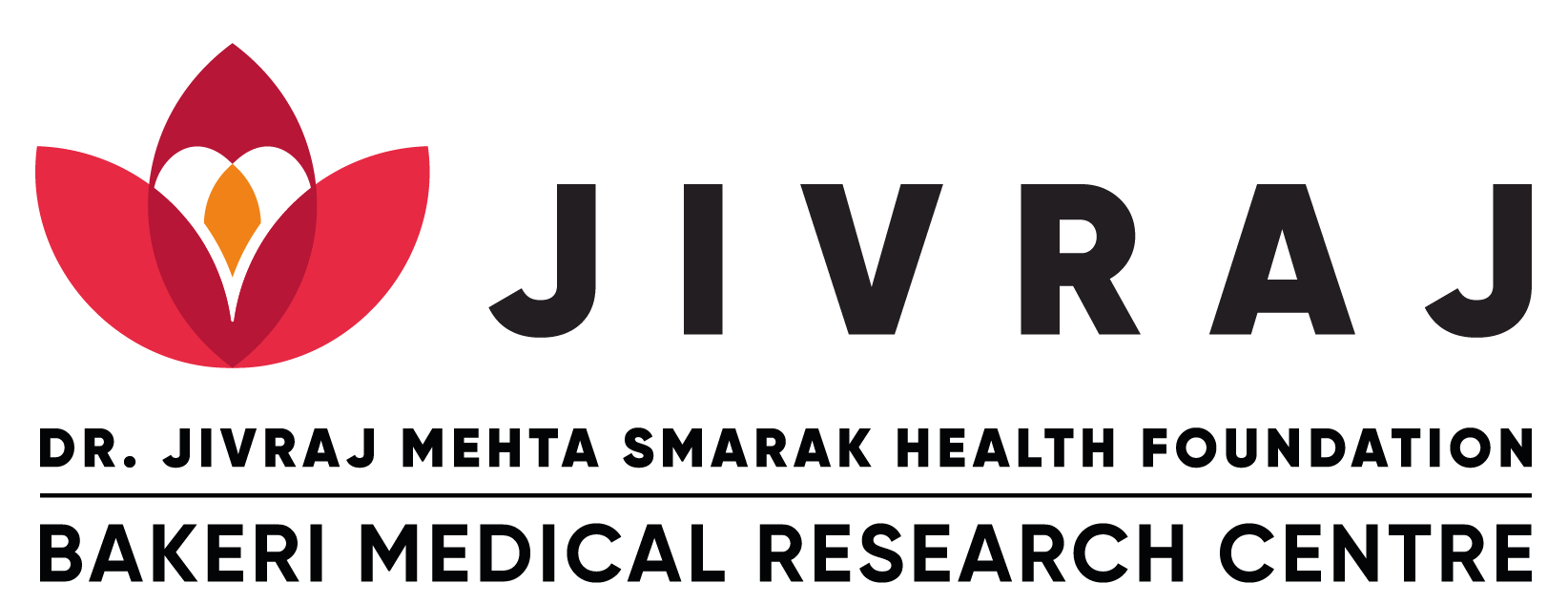The Importance of Regular Eye Exams: How Dr. Jivraj Mehta Hospital Detects Glaucoma Early
Glaucoma is often referred to as the “silent thief of sight” because it can gradually damage the optic nerve without any obvious symptoms until significant vision loss occurs. By the time individuals notice the effects, the damage may already be irreversible. This makes regular eye exams critical for early detection and prevention of vision loss due to glaucoma. Dr. Jivraj Mehta Hospital in Ahmedabad plays a leading role in identifying glaucoma early through state-of-the-art diagnostic tools and a comprehensive, patient-centered approach.
This article emphasizes the importance of routine eye exams for glaucoma detection and explains how Dr. Jivraj Mehta Hospital utilizes advanced diagnostic technologies to provide thorough eye care. We will also cover the types, causes, and risk factors of glaucoma, offering insights into how early diagnosis can prevent irreversible damage to vision.
What is Glaucoma?
Glaucoma is a group of eye diseases that damage the optic nerve, a critical pathway that connects the eye to the brain. The condition is most commonly caused by elevated intraocular pressure (IOP), which occurs when the eye’s drainage system becomes blocked or fails to function correctly, leading to fluid buildup inside the eye. Over time, this increased pressure can cause damage to the optic nerve, leading to permanent vision loss if left untreated.
Types of Glaucoma
There are several types of glaucoma, each with different causes, symptoms, and treatment strategies. Understanding these types can help you identify the signs and take action promptly.
Primary Open-Angle Glaucoma (POAG)
This is the most common form of glaucoma. It occurs gradually when the drainage canals of the eye become clogged over time, causing an increase in IOP. The symptoms often develop so slowly that patients may not notice any vision changes until significant damage has been done. POAG is typically diagnosed through regular eye exams.
Angle-Closure Glaucoma
Also known as acute glaucoma, this type is much rarer but much more serious. It occurs when the angle between the iris and cornea suddenly closes, blocking the flow of fluid out of the eye, leading to a rapid rise in IOP. This condition can cause sudden symptoms, including intense eye pain, blurred vision, nausea, and headaches. Angle-closure glaucoma is considered a medical emergency that requires immediate attention.
Testimonial
“As patient I was hospitalized at this hospital for 5 days and my experience was so satisfying. The medical staff (especially F wing staff )were incredibly professional, attentive, and compassionate, ensuring all my needs were met promptly. The facilities were spotless, modern, and comfortable, making my recovery as pleasant as possible. The doctors provided thorough and clear explanations of my treatment, which greatly eased my worries.“
Normal-Tension Glaucoma
In this form of glaucoma, optic nerve damage occurs even without an increase in IOP. The exact cause is unknown, but it may be related to poor blood flow to the optic nerve or other underlying factors.
Secondary Glaucoma
This type results from other conditions, such as eye injuries, inflammation, or the use of certain medications like corticosteroids. Secondary glaucoma can also develop as a result of other eye diseases or systemic conditions.
Congenital Glaucoma
Congenital glaucoma occurs in infants and young children due to abnormal development of the eye’s drainage system. This condition is usually identified in early childhood when it causes visible symptoms such as cloudy eyes and excessive tearing.
Causes of Glaucoma

While elevated IOP is a common cause of glaucoma, other factors may contribute to the development of the disease. These include:
- Inherited Genetic Mutations: Family history plays a significant role in glaucoma development. People with a family member who has glaucoma are more likely to develop the condition themselves.
- Age: The risk of developing glaucoma increases with age, particularly after 40. Individuals over 60 are at a higher risk, with the risk continuing to increase as they get older.
- Eye Injuries: Previous eye trauma, such as blunt force trauma or surgery, can increase the risk of developing glaucoma later in life.
- Prolonged Use of Steroids: Long-term use of corticosteroids, particularly eye drops, can lead to increased IOP and an elevated risk of developing glaucoma.
- Medical Conditions: Conditions such as diabetes, high blood pressure, and heart disease can increase the likelihood of developing glaucoma.
Risk Factors for Glaucoma
While anyone can develop glaucoma, certain individuals are at a higher risk due to various factors. Understanding these risk factors can help you take proactive steps in managing your eye health.
Age
As mentioned earlier, the risk of glaucoma increases significantly after the age of 40. The risk is particularly high for individuals over 60, with the likelihood of developing glaucoma continuing to rise with age.
Family History
Genetics plays a significant role in the development of glaucoma. If someone in your family has glaucoma, you are more likely to develop it. Having more than one family member diagnosed with glaucoma further increases your risk.
Ethnicity
Certain ethnic groups have a higher predisposition to developing glaucoma. African Americans, Hispanics, and Asians have higher rates of glaucoma, with African Americans at higher risk for more severe vision loss. Asian populations are particularly vulnerable to angle-closure glaucoma.
Client Speaks
“Very good hospital. Treatment given by doctors is very useful and useful. Nursing & Support staff is also very supportive as they always keep smile with lot of sympathy for patients and their family members. Really Val for money with modernized treatment. No need to go for private hospitals which take unnecessary premium charges. Bcz, same facilities and treatment, you can get here at their affordable prices.“
Medical Conditions
People with medical conditions such as diabetes, hypertension, and heart disease have an increased risk of developing glaucoma. These conditions can affect blood flow to the optic nerve and increase the likelihood of optic nerve damage.
Eye Conditions
Individuals with conditions like high myopia (nearsightedness), previous eye injuries, or thin corneas may have an increased risk of developing glaucoma. These individuals should have regular eye exams to monitor for signs of glaucoma.
The Importance of Regular Eye Exams at Dr. Jivraj Mehta Hospital
The key to preventing vision loss from glaucoma is early detection, and regular eye exams are the best way to catch the condition before it causes irreversible damage. At Dr. Jivraj Mehta Hospital, we emphasize the importance of routine eye exams, particularly for individuals at higher risk for glaucoma.
Early Detection Saves Sight
In the early stages of glaucoma, there are no noticeable symptoms. As the condition progresses, it gradually causes peripheral (side) vision loss, which may not be immediately obvious. By the time symptoms appear, significant optic nerve damage may already have occurred. That’s why regular eye exams are critical for detecting glaucoma before vision loss becomes significant.
Advanced Diagnostic Technologies at Dr. Jivraj Mehta Hospital
At Dr. Jivraj Mehta Hospital, we use state-of-the-art diagnostic technologies to provide the most accurate and comprehensive eye care. These include:

- Tonometry: This test measures intraocular pressure (IOP), which is the most common indicator of glaucoma. Regular IOP testing helps detect potential glaucoma before significant nerve damage occurs.
- Ophthalmoscopy: This procedure allows the ophthalmologist to examine the optic nerve for signs of damage caused by increased pressure, a key symptom of glaucoma.
- Visual Field Test: This test checks for peripheral vision loss, which is one of the earliest signs of glaucoma. It helps identify damage to the optic nerve even before patients notice changes in their vision.
- Pachymetry: This test measures the thickness of the cornea, as thinner corneas are linked to a higher risk of developing glaucoma. It helps assess the individual risk level for developing the condition.
- Optical Coherence Tomography (OCT): OCT provides detailed imaging of the optic nerve and retina, helping to detect early changes associated with glaucoma and monitor the progression of the disease.
By utilizing these advanced tools, Dr. Jivraj Mehta Hospital ensures that glaucoma is detected early and treated effectively, preventing irreversible vision loss and preserving eye health.
Treatment Options for Glaucoma at Dr. Jivraj Mehta Hospital
Once glaucoma is detected, the goal of treatment is to lower intraocular pressure (IOP) to prevent further optic nerve damage. The treatment options available at Dr. Jivraj Mehta Hospital include:
Medications (Eye Drops)
Prescription eye drops are typically the first line of treatment. These medications either reduce fluid production within the eye or increase the drainage of fluid, thereby lowering IOP. Some common types of glaucoma medications include prostaglandins, beta-blockers, and carbonic anhydrase inhibitors.
Laser Therapy
Laser procedures such as laser trabeculoplasty and laser iridotomy are effective in improving fluid drainage and reducing IOP. These treatments are often used for open-angle and angle-closure glaucoma, respectively.
Surgical Options
In more severe cases, surgery may be required to create a new drainage channel for fluid or to install a drainage device. Trabeculectomy and glaucoma drainage devices are common surgical treatments.
Minimally Invasive Glaucoma Surgery (MIGS)
For early to moderate glaucoma, MIGS offers a less invasive alternative to traditional surgery, with faster recovery times and fewer risks.
Frequently Asked Questions (FAQs)
What are the symptoms of glaucoma?
In the early stages, glaucoma typically has no symptoms. As the condition progresses, symptoms may include gradual loss of peripheral vision, difficulty adjusting to low light, halos around lights, and eye pain.
How often should I get tested for glaucoma?
If you are over 40 or have a family history of glaucoma, you should have an eye exam every 1-2 years. If you have other risk factors such as high blood pressure or diabetes, more frequent exams may be recommended.
Can glaucoma be cured?
Currently, there is no cure for glaucoma. However, with early detection and proper treatment, the progression of the disease can be slowed, and further damage can be prevented.
How does Dr. Jivraj Mehta Hospital help in the early detection of glaucoma?
At Dr. Jivraj Mehta Hospital, we use advanced diagnostic technologies such as tonometry, ophthalmoscopy, visual field tests, pachymetry, and OCT to detect glaucoma early and provide timely treatment.
What are the treatment options for glaucoma?
Treatment options include prescription eye drops, laser therapy, surgery, and minimally invasive procedures. The goal is to lower intraocular pressure to prevent further damage to the optic nerve.
Schedule your eye exam today at Dr. Jivraj Mehta Hospital to detect glaucoma early and protect your vision. Early diagnosis and treatment are key to preserving your sight and preventing irreversible damage. Call us now at 63571 88019 for an appointment.








